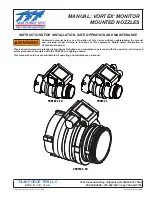
Page 29
Nature
2®
Fusion Soft Installation and Operation Manual
• High salt concentration above 4,000 ppm may damage the power center.
• High salt concentration above 6,000 ppm may cause corrosion damage to pool
fi
xtures.
NOTE
Should too much salt be inadvertently added to the pool see
Section 7, Troubleshooting
.
CAUTION
It is important to note that certain materials used in and around swimming pools and spas may not be compatible
with chemicals commonly used to purify pool and spa water (e.g. acids, chlorine, salt, stabilizers, etc.).
As such, Zodiac Pool Systems, Inc. does not warrant or guarantee that the chlorinated water generated by the
Nature
2
Fusion Soft/PureLink™ will not damage or destroy certain types of plants, decking, coping and other
materials in and around your pool and/or spa. Before selecting materials to be used in and around your pool and/or
spa, please discuss all options with your contractor to assess the compatibility of such materials and chemicals.
Some helpful considerations may include:
• Choosing plants that can withstand splash out of pool water containing chlorine and/or salt and other water
puri
fi
cation chemicals.
• All metal components used in and around a pool should be of a high grade, quality stainless steel.
• Careful selection of masonry products. The porosity and hardness of natural stones varies greatly. Therefore we
recommend you consult with your builder or stone contractor on the best choice for stone materials around your
pool or spa.
• Sealing all masonry products. Professionals in the stone industry specify that even natural stone, especially when
used outdoors, be sealed to prevent weathering, staining, and premature degradation. Consult with your stone or
deck contractor for the proper sealer for the masonry products you have selected to use around your pool or spa.
• For the optimal results, sealers should be reapplied on a regular basis. Reapply the protective sealer on a
schedule per the manufacturer’s instructions.
4.6.4 How to Add Salt to the Pool?
1.
Turn on pump to circulate pool water.
IMPORTANT
Turn the chlorine production off by pressing the arrow button A and setting CHLORINE PRODUCTION
rate to 00%.
2.
Test the water for salinity level using test strips, electronic meter, or by your local quali
fi
ed service
representative.
3.
Use the Table 1 to determine the amount of salt to add. Be conservative when adding salt as it is easier to add
more if needed than it is to dilute if there is too much salt.
4.
Broadcast salt into pool. Do not add through skimmer, main drain, or surge tank. Brush the salt around the pool
to facilitate dissolving. Circulate
fi
lter system for 24 hours to ensure even distribution.
5.
After 24 hours, verify correct salt reading.
6.
Turn on the system and set to desired chlorine production rate (pressing the arrow buttons
A
or
B
).
NOTE
For a new pool or newly resurfaced pool it is recommended to wait at least 30 days (surface should be
completely cured) before adding salt. Follow the pool surface manufacturers guidelines for your particular
pool. For vinyl and
fi
berglass pools, salt can be added at start up.
















































